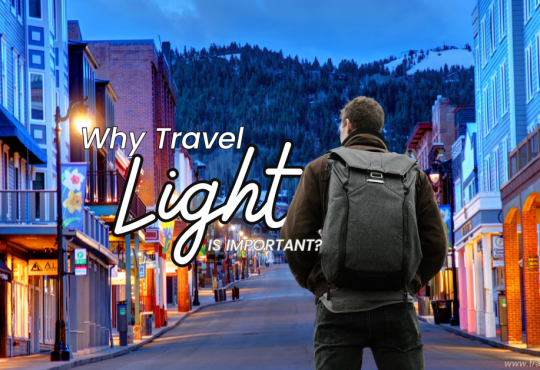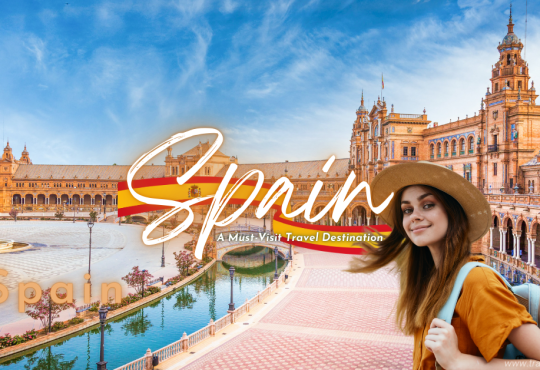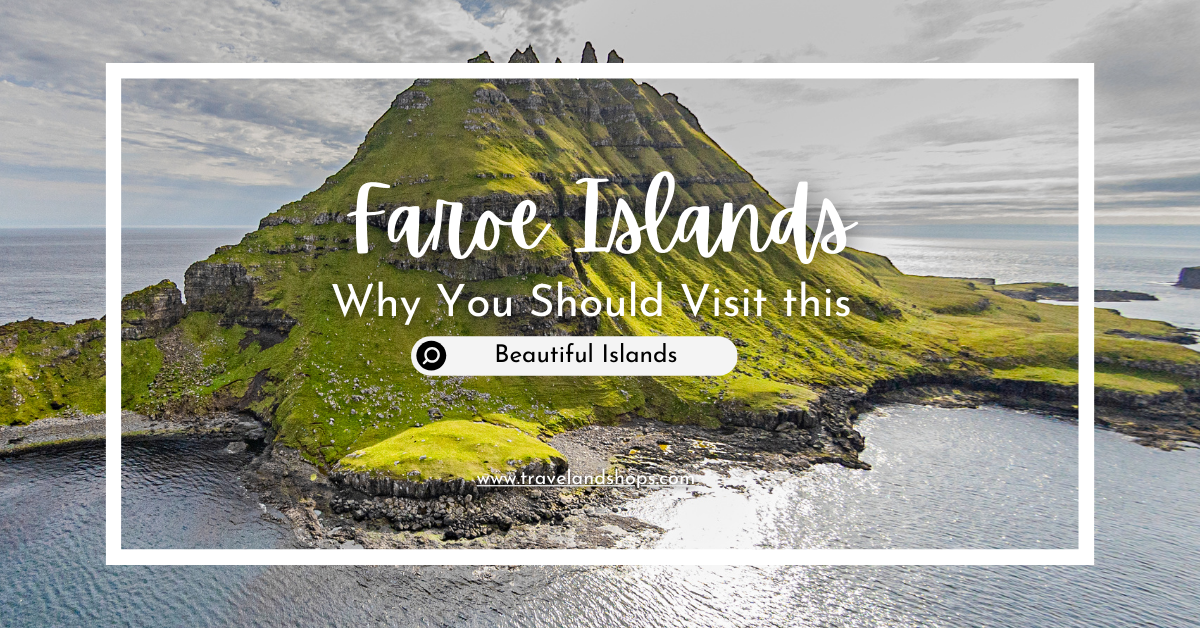
Nestled between Iceland and Norway, the Faroe Islands are a hidden gem waiting to be explored. With their dramatic landscapes, vibrant culture, and rich history, these 18 islands offer an unforgettable experience for any traveler. If you’re seeking a destination that combines breathtaking scenery with unique activities, look no further. The Faroe Islands might just be your next travel obsession.
In this article, we’ll dive into the reasons why you should visit the Faroe Islands. From thrilling adventures and local delicacies to budget tips and the best places to stay, we’ll cover everything you need to know for an amazing trip. Whether you’re an outdoor enthusiast, a foodie, or a culture lover, the Faroe Islands have something special for you. Let’s embark on this journey together!
Why You Should Visit the Faroe Islands
1. Stunning Natural Beauty
The Faroe Islands are renowned for their breathtaking landscapes, which have a mystical and unspoiled quality. With dramatic cliffs that rise steeply from the ocean, lush green valleys, and picturesque villages, the scenery is nothing short of spectacular. Here are some highlights:
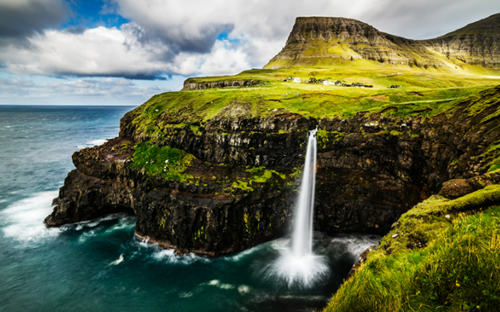
- Dramatic Cliffs and Waterfalls: The islands boast some of Europe’s most dramatic cliffs, such as Mulafossur Waterfall in Gásadalur, where water plunges straight into the ocean. The sight of waterfalls cascading down sheer cliffs is a recurring theme throughout the islands, each offering its own unique charm.
- Unique Geological Features: The geology of the Faroe Islands is a marvel, with volcanic formations and rugged coastlines that have shaped the landscape over millennia. The cliffs around Vestmanna are famous for their striking vertical formations and the rich birdlife that nests there, making it a popular spot for boat tours.
- Changing Weather: The weather in the Faroe Islands can change rapidly, which adds to the dramatic scenery. One moment, you may be basking in sunlight, while the next, mist rolls in, enveloping the landscape in an ethereal fog. This dynamic weather can create stunning photographic opportunities.
2. Unique Outdoor Activities
For those who love adventure, the Faroe Islands offer a plethora of outdoor activities that allow you to connect with nature in a profound way. Here’s what you can do:
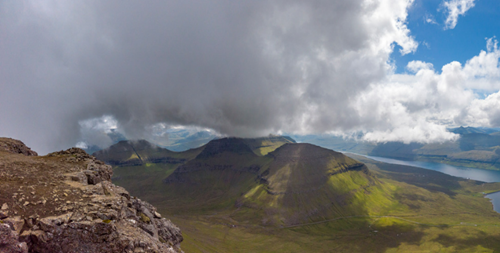
- Hiking Adventures: With over 1,000 kilometers of marked hiking trails, the islands cater to all levels of hikers. Trails like the one to Slættaratindur, the highest mountain, or the coastal walk to Kirkjubøur showcase the islands’ diverse landscapes, from mountain vistas to serene beaches.
- Sea Kayaking and Fishing: Paddle through the crystal-clear waters surrounding the islands, where you can explore hidden coves and spot seals and birds. Fishing is also popular, with opportunities for deep-sea fishing and catching local fish like cod and haddock.
- Whale Watching: The waters around the Faroe Islands are rich in marine life, making it one of the best places in the world for whale watching. Common sightings include orcas, minke whales, and even humpback whales during certain seasons. Several local tour operators offer excursions that provide a chance to see these magnificent creatures up close.
3. Rich Culture and History
The Faroe Islands are not just about stunning landscapes; they also have a rich cultural heritage that reflects their Viking roots and unique traditions. Here’s what to explore:
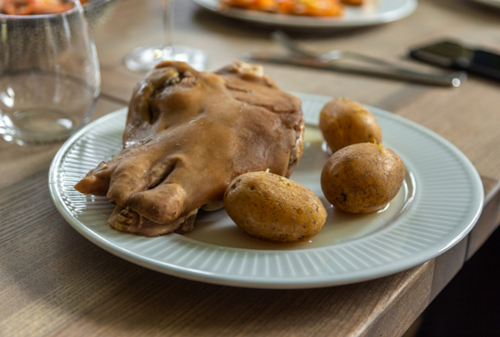
- Traditional Music and Dance: The islands have a thriving music scene that incorporates traditional Faroese folk music with contemporary styles. Local festivals often feature traditional music and dance, providing insight into the islands’ cultural heritage. Participating in a dance or music event can be a memorable experience.
- Craftsmanship and Art: The Faroe Islands are home to talented artisans who create beautiful crafts from wool, pottery, and other local materials. Visiting local workshops or galleries can offer a glimpse into the islands’ artistic traditions, where you can purchase unique souvenirs directly from the artists.
- Culinary Heritage: Faroese cuisine is deeply tied to the islands’ history and geography. Traditional dishes often include lamb, fish, and seabirds, reflecting the natural resources available. Exploring local markets and restaurants will give you a taste of the islands’ culinary traditions.
4. A Sense of Community
One of the most endearing aspects of visiting the Faroe Islands is the sense of community you’ll find. With a small population spread across the islands, there’s a warm, welcoming atmosphere that invites visitors to connect with locals.
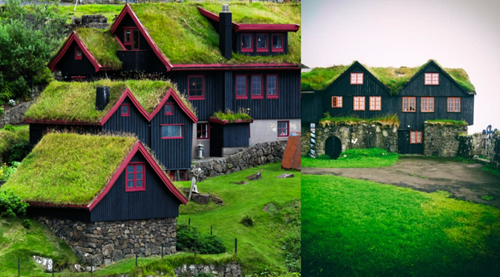
- Local Hospitality: Faroese people are known for their hospitality and friendliness. Engaging in conversations with locals often leads to insightful stories about their lives, culture, and the islands themselves. Many residents are eager to share their favorite spots and hidden gems, making your visit even more special.
- Community Events: If you visit during the summer, you might coincide with one of the many local festivals, such as Ólavsøka, which celebrates the islands’ culture with music, food, and traditional games. These events offer a unique opportunity to experience the islands’ vibrant community spirit firsthand.
5. Accessibility and Safety
Despite being remote, the Faroe Islands are surprisingly accessible. Regular flights connect the islands to major cities in Europe, and once you arrive, getting around is relatively easy.
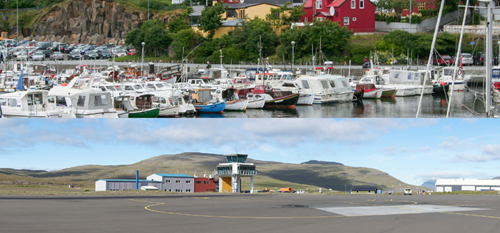
- Efficient Transportation: The islands are well-connected by a network of buses and ferries, making it simple to explore multiple islands during your stay. Renting a car is also a popular option, giving you the freedom to discover hidden gems at your own pace.
- Safety: The Faroe Islands are known for their low crime rate and friendly atmosphere, making them a safe destination for travelers. Whether you’re hiking in the wilderness or exploring local towns, you can feel at ease during your journey.
With all these compelling reasons, it’s clear that the Faroe Islands offer a travel experience unlike any other. From the captivating landscapes and adventurous activities to the rich culture and welcoming community, this destination is sure to leave a lasting impression. Whether you’re seeking adventure, relaxation, or cultural immersion, the Faroe Islands should be high on your travel list.
Things to Do in the Faroe Islands
The Faroe Islands are a paradise for outdoor enthusiasts and culture lovers alike. With a variety of activities that showcase the stunning natural beauty and rich heritage of the islands, there’s something for everyone to enjoy. Here’s a closer look at some of the best things to do while visiting:
Outdoor Adventures
1. Hiking the Lighthouse Trail on Mykines
Mykinens is often dubbed the “puffin island” for its large populations of these adorable birds, especially during the breeding season from April to August. The Lighthouse Trail is a must-do hike that leads you through breathtaking landscapes to the island’s lighthouse.
- Trail Details: The hike is moderately challenging and takes about 3–4 hours round trip. Along the way, you’ll enjoy panoramic views of the ocean, cliffs, and puffin colonies. Don’t forget your camera, as the sights are absolutely breathtaking!
2. Explore the Cliffs of Vestmanna
Take a boat tour to the Vestmanna Cliffs, which offer some of the most spectacular coastal views in the Faroe Islands. The cliffs rise steeply from the sea, providing a nesting ground for thousands of seabirds, including puffins, guillemots, and kittiwakes.
- Boat Tours: Tours typically last about 2 hours, during which you can marvel at the cliffs and even go into sea caves. It’s an exhilarating experience, allowing you to get up close to the vibrant birdlife.
3. Kayaking Around the Islands
For a different perspective of the stunning scenery, consider kayaking along the coast. The tranquil waters provide an excellent opportunity to explore hidden beaches, dramatic cliffs, and secluded islands.
- Guided Tours: Many local companies offer guided kayaking tours, catering to all skill levels. Paddling through the calm waters around Tórshavn or Nólsoy allows you to appreciate the islands from a unique angle while keeping an eye out for seals and marine birds.
Cultural Experiences
4. Visit the National Museum of the Faroe Islands
Located in Tórshavn, the National Museum offers an insightful look into the history, culture, and natural history of the Faroe Islands.
- Exhibits: The museum features exhibits on Viking history, traditional Faroese craftsmanship, and the unique flora and fauna of the islands. It’s a great starting point to understand the cultural background of your visit.
5. Experience Traditional Faroese Cuisine
Exploring the local culinary scene is a vital part of any trip to the Faroe Islands. Traditional dishes emphasize fresh, locally sourced ingredients.
- Must-Try Dishes: Sample skerpikjøt (fermented lamb), ræst kjøt (fermented fish), and fresh seafood. Local restaurants like Kikgapari and Barbara Fish House in Tórshavn serve these traditional dishes in cozy atmospheres.
- Culinary Tours: Consider joining a culinary tour that combines cooking classes with visits to local markets to learn about Faroese ingredients and cooking techniques firsthand.
Relaxation and Scenic Drives
6. Take a Scenic Drive Through the Islands
Driving through the Faroe Islands allows you to experience the stunning scenery at your own pace. The winding roads connect the islands, leading to breathtaking views around every bend.
- Route Recommendations: The drive from Tórshavn to Gjógv is particularly scenic, offering views of lush valleys and striking cliffs. Be sure to stop at viewpoints along the way to capture the scenery.
7. Relax at Local Spas
After a day of hiking and exploring, treat yourself to some relaxation at one of the local spas. Many offer treatments using natural products sourced from the islands.
- Spa Experiences: Look for facilities that offer traditional Faroese treatments, which may include massages, facials, and thermal baths. Enjoying a spa day while overlooking the ocean can be a perfect way to unwind.
Unique Experiences
8. Attend Local Festivals
If your visit coincides with a local festival, be sure to participate! The Faroe Islands celebrate numerous festivals throughout the year that showcase their unique culture and traditions.
- Ólavsøka: The biggest festival occurs in late July, celebrating the islands’ heritage with music, dance, and local cuisine. It’s a vibrant event that brings the community together and offers visitors a chance to engage with Faroese culture.
9. Explore the Islands’ Folklore and Legends
The Faroe Islands are steeped in folklore and mythology. Many locals are happy to share stories of trolls, elves, and other mystical beings that are said to inhabit the islands.
- Guided Tours: Join a folklore tour or storytelling session to immerse yourself in these enchanting tales. Understanding the local legends can add a magical layer to your exploration of the islands.
10. Visit the Historic Village of Saksun
Saksun is known for its picturesque setting and historical significance. Nestled between steep mountains, this village features a charming church and a beautiful natural lagoon.
- Hiking Opportunities: The area is great for hiking, with trails leading to stunning viewpoints of the lagoon and surrounding landscape. The unique geography of Saksun, along with its traditional turf-roofed houses, offers a glimpse into the Faroe Islands’ rural life.
Budgeting for Your Trip to the Faroe Islands
Visiting the Faroe Islands is a unique experience, but it’s essential to plan your budget carefully. While the islands are known for their stunning landscapes and rich culture, they can also be relatively expensive compared to other travel destinations. Here’s a breakdown of what to expect regarding costs and budgeting for your trip:
1. Accommodation Costs
Accommodation options in the Faroe Islands range from budget-friendly hostels to luxury hotels. Here’s what you can expect:
- Budget Accommodation: Hostels and guesthouses typically range from €40 to €100 per night for a bed in a shared dormitory or a simple private room. Some budget accommodations may include breakfast.
- Mid-Range Hotels: For a more comfortable stay, mid-range hotels and boutique accommodations usually charge between €100 to €200 per night. These often include amenities such as breakfast and Wi-Fi.
- Luxury Options: If you’re looking for a more upscale experience, luxury hotels and unique stays (like traditional turf-roofed houses) can range from €200 to €400 or more per night. Some of these places offer exquisite dining experiences and stunning views.
- Booking Tips: To save on accommodation, consider visiting during the shoulder seasons (late spring or early fall) when prices may be lower. Booking in advance can also help you secure better rates, especially in popular areas like Tórshavn or Gásadalur.
2. Transportation Expenses
Getting around the Faroe Islands is relatively easy, but transportation costs can add up. Here’s an overview of your options:
- Flights: Round-trip flights to the Faroe Islands can range from €200 to €600, depending on your departure location and the time of year. Keep an eye out for special deals or off-season rates.
- Local Transport: The public bus system is efficient and affordable, with single fares typically costing around €4. A multi-day pass can save you money if you plan to travel frequently.
- Car Rentals: Renting a car is a popular option for exploring the islands at your own pace. Expect to pay around €50 to €100 per day, plus additional costs for fuel (which can be quite high). Note that the roads are well-maintained, and many scenic routes offer stunning views.
- Ferries: Ferries connect many of the islands and are reasonably priced, with fares usually around €5 to €20, depending on the route. Be sure to check schedules in advance, as ferry services may vary.
3. Food and Dining
Dining in the Faroe Islands can range from affordable takeout options to high-end restaurants. Here’s what to anticipate:
- Budget Eats: For a budget-friendly meal, consider grabbing a sandwich, pizza, or takeaway, which typically costs between €10 to €15. Supermarkets like BÓNUS and Føroya Bjór offer affordable groceries and snacks if you prefer to self-cater.
- Mid-Range Restaurants: A meal at a mid-range restaurant will usually set you back about €20 to €40 per person. Many restaurants focus on local ingredients and offer seasonal menus featuring fresh seafood and lamb.
- Fine Dining: For a more luxurious experience, fine dining can range from €50 to €100 or more per person. Some upscale restaurants offer tasting menus that highlight Faroese cuisine, providing an unforgettable culinary experience.
- Dining Tips: If you’re looking to save on food costs, consider eating lunch as your main meal of the day, as many restaurants offer special lunch deals. Also, don’t hesitate to try local cafes for affordable pastries and coffee.
4. Activity Costs
There are numerous activities to enjoy in the Faroe Islands, with varying costs. Here’s a breakdown:
- Outdoor Activities: Many hiking trails are free to access, making them an excellent budget-friendly option. Guided tours, however, can range from €50 to €150, depending on the activity. For example, whale watching or boat tours to the Vestmanna Cliffs may cost around €60 to €100.
- Cultural Experiences: Entrance fees to museums and cultural sites typically range from €5 to €15. Some festivals and events may have a nominal entry fee or be entirely free.
- Additional Costs: Consider budgeting for souvenirs, tips, and any additional experiences you may want to enjoy, such as spa treatments or guided tours. Setting aside €10 to €20 per day for miscellaneous expenses can help cover these costs.
5. Sample Daily Budget
To give you a clearer idea of what to expect, here’s a sample daily budget based on different travel styles:
- Budget Traveler:
- Accommodation: €50 (hostel)
- Food: €20 (self-catering and budget eats)
- Transportation: €10 (bus fares)
- Activities: €15 (free hikes and local sights)
- Total: €95 per day
- Mid-Range Traveler:
- Accommodation: €150 (mid-range hotel)
- Food: €50 (one meal at a restaurant, self-catering for others)
- Transportation: €20 (car rental split between travel days)
- Activities: €40 (guided tour or activity)
- Total: €260 per day
- Luxury Traveler:
- Accommodation: €300 (luxury hotel)
- Food: €100 (fine dining experiences)
- Transportation: €50 (car rental)
- Activities: €100 (exclusive tours and experiences)
- Total: €550 per day
Tips to Save Money
- Travel Off-Peak: Visit during the shoulder seasons (spring or fall) to avoid crowds and save on accommodation.
- Self-Catering: Choose accommodations with kitchen facilities to prepare some of your meals, cutting down food costs.
- Free Activities: Take advantage of the many free hiking trails and natural attractions around the islands.
Budgeting for your trip to the Faroe Islands can help ensure a smooth and enjoyable experience. By planning ahead and considering accommodation, transportation, food, and activity costs, you can tailor your budget to fit your travel style. Whether you’re a budget-conscious traveler or seeking a luxurious getaway, the Faroe Islands offer diverse options that will allow you to experience the beauty and culture of this unique destination without breaking the bank.
Where to Stay in the Faroe Islands
Finding the right place to stay in the Faroe Islands can enhance your experience, allowing you to explore the stunning landscapes and local culture comfortably. With a variety of accommodation options ranging from cozy guesthouses to luxurious hotels, there’s something to suit every budget and preference. Here’s a breakdown of where to stay in the Faroe Islands:
1. Tórshavn: The Capital City
As the capital and largest city, Tórshavn is an excellent base for exploring the Faroe Islands. Here, you’ll find a mix of modern amenities and traditional charm.
- Hotels:
- Hotel Føroyar: Perched on a hill overlooking the city, this hotel offers stunning views, modern amenities, and easy access to hiking trails. Prices typically range from €150 to €250 per night.
- Hotel Tórshavn: Located in the city center, this hotel is perfect for those who want to be close to restaurants, shops, and cultural sites. Rates usually range from €100 to €200 per night.
- Guesthouses:
- Havgrím Seaside Hotel: This charming guesthouse features comfortable rooms and is situated by the waterfront, providing a serene atmosphere. Prices range from €80 to €150 per night.
- Guesthouse Marknagil: A budget-friendly option with clean, simple rooms. It offers shared kitchen facilities, making it great for those looking to self-cater. Rates are usually around €60 to €100 per night.
2. Kirkjubøur: A Historic Village
Kirkjubøur is the historical heart of the Faroe Islands and is known for its charming houses and rich history.
- Accommodation Options:
- Kirkjubøur Guesthouse: This family-run guesthouse offers cozy rooms with local charm and easy access to historical sites. Prices are generally around €80 to €120 per night.
- Hotel Gjáargarður: Located a short drive from Kirkjubøur, this hotel offers comfortable accommodations with beautiful views and is an excellent option for those wanting to explore the surrounding areas. Rates typically range from €100 to €180 per night.
3. Gjógv: Scenic Beauty
The village of Gjógv is known for its picturesque landscape and natural harbor, making it a fantastic spot for nature lovers.
- Hotel:
- Gjaargardur Guesthouse: This guesthouse offers stunning views and a cozy atmosphere, making it perfect for relaxation after a day of hiking. Prices usually range from €100 to €150 per night.
- Alternative Stays:
- Faroese Turf Houses: For a unique experience, consider staying in one of the traditional turf houses. These accommodations provide an authentic glimpse into Faroese life and history.
4. Mykines: The Puffin Island
If you want to get away from the hustle and bustle, Mykines is the perfect spot for a tranquil getaway, especially known for its puffin population.
- Guesthouses:
- Mykines Guesthouse: This charming guesthouse offers simple accommodations with stunning views of the cliffs and ocean. Prices range from €90 to €130 per night.
- Puffin Hostel: A budget-friendly option with dormitory-style and private rooms, perfect for backpackers and those looking for a social atmosphere. Rates typically start at €50 for a bed in a dorm.
5. Saksun: A Quaint Village
Saksun is famous for its stunning natural scenery and traditional turf-roofed houses, making it a delightful place to stay.
- Accommodation:
- Saksun Camping: If you’re feeling adventurous, camping in Saksun can be an unforgettable experience, with breathtaking views of the surrounding mountains and the lagoon. Fees are generally around €20 to €30 per night.
- Hotel Saksun: A more comfortable option with a unique charm, this hotel offers cozy rooms and a welcoming atmosphere. Prices typically range from €100 to €150 per night.
6. Other Considerations
- Airbnb and Vacation Rentals: For travelers seeking a more home-like experience, numerous Airbnb options and vacation rentals are available throughout the islands. Prices vary based on location and amenities but typically range from €80 to €200 per night.
- Booking Tips:
- Plan Ahead: Accommodation can fill up quickly, especially during peak tourist seasons (June to August), so it’s wise to book in advance.
- Check Reviews: Use platforms like TripAdvisor or Booking.com to read reviews and compare prices to find the best accommodations for your needs.
- Look for Packages: Some hotels offer packages that include meals or guided tours, which can provide additional value.
Best Places to Visit in the Faroe Islands
1. Gásadalur
Gásadalur is one of the most picturesque villages in the Faroe Islands, known for its dramatic backdrop of mountains and stunning coastal views. The highlight here is the breathtaking Mulafossur Waterfall, which cascades directly into the Atlantic Ocean, creating an iconic scene often featured in travel magazines.
- Activities: Enjoy the scenic hike from Gásadalur to the nearby village of Múlagljúfur, where you’ll be treated to breathtaking views of the waterfall and surrounding cliffs. The trail is well-marked and takes about an hour, making it accessible for most hikers.
- Photography: The village and the waterfall are incredibly photogenic, especially during sunrise and sunset, making it a favorite spot for photographers.
2. Kirkjubøur
Kirkjubøur is not only the oldest village in the Faroe Islands but also a cultural treasure. With roots tracing back to the Viking Age, this charming village is home to several significant historical sites.
- Historical Significance: Visit the Kirkjubøargarður, a traditional farmhouse that has been inhabited since the 14th century and is considered one of the oldest wooden houses still in use today. The site includes the St. Olav’s Church, which dates back to the 12th century, and the ruins of the medieval Magnus Cathedral.
- Local Culture: You may even encounter locals offering guided tours that share insights into the village’s rich history, the traditional way of life, and the stories of its inhabitants over centuries.
3. Eiði
Eiði is a small village located on the island of Eysturoy, known for its stunning landscapes and impressive sea stacks known as Risin og Kellingin. These legendary rock formations rise dramatically from the ocean and are steeped in folklore.
- Scenic Views: The village itself offers incredible views of the surrounding mountains and the North Atlantic. A short hike to the Eiði lookout point gives you a panoramic view of the cliffs and the sea, perfect for those Instagram-worthy shots.
- Hiking Trails: Eiði also serves as a starting point for various hiking trails, including a hike to Slættaratindur, the highest peak in the Faroe Islands. This hike is moderately challenging but rewards you with stunning views of the surrounding islands and landscapes.
4. Nólsoy
Just a short ferry ride from Tórshavn, Nólsoy is a tranquil island known for its untouched nature and quaint charm. With only around 200 residents, it offers a serene escape from the more tourist-heavy areas.
- Hiking and Wildlife: The island is famous for its diverse birdlife, making it an excellent spot for birdwatching, particularly puffins during the summer months. The Nólsoy Lighthouse hike is a popular trail, leading you to breathtaking views of the ocean and neighboring islands.
- Local Life: Explore the tiny village, where you can find local art and crafts for sale. Many visitors enjoy stopping at the cozy café for a taste of Faroese coffee and homemade cakes.
5. Tórshavn
As the capital city of the Faroe Islands, Tórshavn is a vibrant hub of culture and activity. Its name, meaning “Thor’s Harbor,” reflects its rich Viking history.
- Historic Sites: Explore the Old Town (Tinganes), where brightly colored wooden houses line the streets. This area is not only picturesque but also historically significant, as it houses the government of the Faroe Islands.
- Culinary Scene: Tórshavn is also a great place to sample Faroese cuisine. Try local restaurants such as Kikgapari, known for its focus on fresh, locally-sourced ingredients and traditional dishes, or Barbara Fish House, which specializes in seafood.
- Cultural Activities: Visit the National Museum of the Faroe Islands, where you can learn about the history, culture, and nature of the islands through engaging exhibits.
Best Dishes to Try in the Faroe Islands
The culinary scene in the Faroe Islands is a delightful reflection of the islands’ culture and environment. With a focus on fresh, locally sourced ingredients, Faroese cuisine features traditional methods of preparation and a variety of flavors that highlight the region’s rich natural resources. Here’s a look at some of the best dishes you should try while visiting:
1. Skerpikjøt (Fermented Lamb)
Skerpikjøt is one of the most iconic traditional dishes in the Faroe Islands. This delicacy is made by hanging lamb in a well-ventilated space to ferment, which enhances its flavor and tenderness.
- What to Expect: The result is a robustly flavored meat that is often served thinly sliced, typically alongside rye bread and local cheese. Many locals enjoy it as part of a traditional Faroese meal.
- Where to Try: Look for it in local restaurants, especially during the autumn months when the lamb is traditionally harvested.
2. Ræst Kjøt (Fermented Fish)
Ræst kjøt, or fermented fish, is another staple of Faroese cuisine, showcasing the islands’ maritime heritage. This dish typically involves fish such as cod or haddock that has been salted and hung to dry in the cool, fresh air.
- Serving Style: Ræst kjøt is usually served with potatoes and a side of local vegetables. It has a unique, tangy flavor profile that’s beloved by many locals.
- Where to Try: Various restaurants offer this dish, but it’s especially prominent in smaller villages where traditional practices are maintained.
3. Faroese Fish Soup
A hearty and comforting dish, Faroese fish soup is made with fresh fish, root vegetables, and herbs. This soup embodies the essence of Faroese cooking, focusing on simplicity and fresh ingredients.
- Flavor Profile: Expect a rich broth with tender fish pieces and a blend of flavors from the vegetables, often finished with a touch of cream for smoothness.
- Where to Try: Many local restaurants, especially along the coast, serve this delicious soup. It’s a perfect choice for a warming meal after a day of exploring.
4. Skerpikjøt (Dried and Fermented Lamb)
Skerpikjøt is a unique Faroese dish made from the meat of sheep that are allowed to ferment and dry in the open air. This traditional preparation method is part of the islands’ culinary heritage.
- Taste and Texture: The flavor is intense and slightly gamey, with a rich, chewy texture. It’s often served thinly sliced with bread and local cheese.
- Best Enjoyed: Try it as part of a charcuterie board featuring other local meats and cheeses.
5. Føroyar Lamb
The Faroese lamb is known for its exceptional quality and flavor, thanks to the sheep grazing on the islands’ rich pastures and coastal herbs.
- Cooking Methods: Lamb dishes may be roasted, grilled, or stewed, often accompanied by root vegetables. The meat is tender and juicy, making it a favorite among locals and visitors alike.
- Where to Try: Many restaurants feature Faroese lamb on their menus, especially during the autumn season.
6. Seafood Dishes
Given the islands’ proximity to the ocean, fresh seafood is a significant part of Faroese cuisine. Look for:
- Cod: Often prepared simply with herbs and served with potatoes, cod is a local favorite.
- Mackerel: This oily fish is flavorful and can be found in various preparations, including smoked or grilled.
- Shellfish: Enjoy fresh mussels or langoustines, often sourced from local waters and served with garlic and herbs.
7. Rye Bread (Rúgbrauð)
Rúgbrauð is a traditional rye bread that is dense, dark, and slightly sweet. It’s often baked in a pot or steamed underground, giving it a unique texture and flavor.
- Serving Suggestions: This bread pairs perfectly with almost any dish, from fish and lamb to spreads like butter or local cheese.
- Where to Try: Many local bakeries and restaurants serve fresh rúgbrauð, and it’s often a staple in traditional Faroese meals.
8. Brewed Beverages
Don’t miss the opportunity to try locally brewed beverages, including:
- Føroya Bjór: This Faroese beer is crafted using local ingredients and comes in various styles, including lager and stout. It’s a great way to experience the local brewing culture.
- Aquavit: A traditional spirit flavored with herbs and spices, aquavit is often enjoyed as an aperitif. It pairs well with Faroese seafood dishes and is a common choice at local gatherings.
9. Traditional Desserts
For dessert, you can find some delightful options that reflect Faroese traditions:
- Kvædegrød: A sweet, thick porridge made from quince, often served warm with cream or milk.
- Rhubarb Crumble: Utilizing fresh rhubarb, this dessert is baked with a crumbly topping and is typically served warm with a scoop of vanilla ice cream.
Best Season to Visit the Faroe Islands
The Faroe Islands offer a unique travel experience year-round, but the best season to visit largely depends on what you hope to see and do during your stay. Each season brings its own charm, landscapes, and activities, making it essential to choose the right time for your trip. Here’s a breakdown of what each season has to offer:
1. Spring (April to June)
- Weather: Spring in the Faroe Islands is characterized by gradually warming temperatures, with averages ranging from 5°C to 12°C (41°F to 54°F). Expect occasional rain and wind, typical of the islands’ climate.
- Activities: Spring is an excellent time for birdwatching, particularly for spotting puffins as they return to the islands in late April. Hiking trails begin to open up, and you can witness the vibrant green landscapes come to life after winter.
- Events: The National Day (Sjóðkalag) is celebrated on June 17, featuring parades and local festivities that highlight Faroese culture.
- Why Visit: Spring offers fewer crowds and the chance to see the islands blossoming with wildflowers, making it an ideal time for nature lovers and those looking to enjoy a quieter experience.
2. Summer (July to August)
- Weather: Summer is the warmest time to visit the Faroe Islands, with average temperatures ranging from 12°C to 15°C (54°F to 59°F), although it can occasionally reach higher. This season experiences the longest days, with up to 18 hours of daylight, allowing for extended exploration.
- Activities: This is peak tourist season, making it perfect for hiking, sailing, and exploring the stunning landscapes. The mild weather also makes it a great time for festivals and outdoor activities, including music events and local markets.
- Events: Numerous festivals, including the G Festival in Gøta, take place during the summer, offering a vibrant atmosphere filled with music and culture.
- Why Visit: If you enjoy lively atmospheres and outdoor adventures, summer is the best time to experience the islands. Just be sure to book accommodations and activities well in advance, as they can fill up quickly.
3. Autumn (September to October)
- Weather: Autumn brings cooler temperatures, averaging between 7°C and 12°C (45°F to 54°F). This season can be quite rainy, but the landscapes are stunning as the leaves change color.
- Activities: Autumn is a fantastic time for hiking and experiencing the islands’ natural beauty. The birdwatching season continues, especially for seabirds and migratory species. The fishing season also offers opportunities to sample fresh catch in local restaurants.
- Events: The Føroyar Festival in September celebrates Faroese culture with music, dance, and food.
- Why Visit: With fewer tourists and spectacular autumn colors, this season is perfect for those looking to enjoy a more peaceful experience while still engaging in outdoor activities.
4. Winter (November to March)
- Weather: Winter in the Faroe Islands is cold and often stormy, with temperatures typically ranging from 0°C to 5°C (32°F to 41°F). Snowfall is possible, especially in the higher elevations, which adds a magical touch to the scenery.
- Activities: While winter is less popular for outdoor activities due to weather conditions, it offers unique opportunities for those interested in experiencing the islands’ quiet beauty. Hiking is still possible in milder conditions, and winter sports like skiing are available in some areas.
- Events: The Christmas season is celebrated with local traditions, and various holiday markets offer visitors a chance to experience Faroese culture.
- Why Visit: If you’re looking for a tranquil escape and enjoy winter landscapes, this season provides a unique perspective of the islands. You may also find more affordable accommodations and fewer crowds.
Experience the magic of the Faroe Islands!
The Faroe Islands are not really a budget-friendly destination that you can visit. It’s unique geography can offer you an unparalleled travel experience that combines stunning natural beauty, rich culture, and unique activities with the right budgeting on your expenses. If you are looking for some outdoor adventures like hiking along cliffs, or just exploring quaint villages, the islands promise memories that will last a lifetime. Don’t miss out savoring local delicacies as you explore each places you can visit. By planning ahead and considering your budget, you can immerse yourself in this remarkable destination without breaking the bank.
As you think about your next travel adventure, remember that the Faroe Islands should be at the top of your list. With their breathtaking landscapes and welcoming locals, it’s a place that invites exploration and discovery. So pack your bags and get ready to experience the magic of the Faroe Islands!




